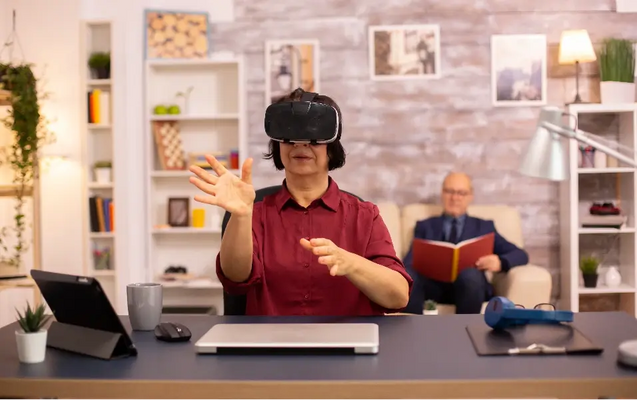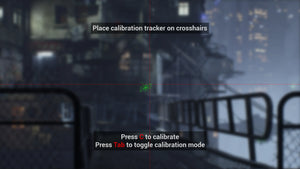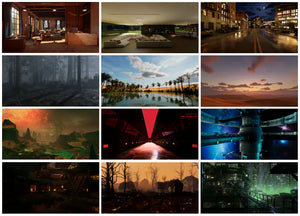Augmented Reality Applications in Education

Technology has always played a vital role in shaping how people learn. From the printing press to the internet, every advancement has changed education in significant ways. Today, one of the most exciting frontiers is augmented reality (AR). By blending real-world environments with computer-generated visuals and interactive elements, AR is redefining how students engage with content, how teachers deliver lessons, and how institutions approach the future of learning.
In this article, we’ll explore the various applications of augmented reality in education, discuss its benefits and drawbacks, examine research-based insights, and highlight real-world classroom examples. Whether you’re an educator, researcher, or student, this guide will provide you with a deep understanding of how AR is transforming education.
What is Augmented Reality in Education?
Augmented reality in education refers to the use of AR tools and applications to create immersive learning experiences. Unlike virtual reality in education, which immerses learners entirely in a digital environment, AR enhances the physical classroom or study space with interactive digital layers.
For example, students can point a smartphone or tablet at a biology textbook image and see a 3D beating heart appear on their screen. Similarly, math learners can use AR to visualize geometric shapes or algebraic equations in real time, making abstract concepts more tangible.
This ability to combine physical and digital realities makes AR an incredibly powerful educational tool.
Applications of Augmented Reality in Education
So, what are the applications of AR in education? Let’s explore some of the most impactful ones across subjects and settings.
1. AR in the Classroom
The augmented reality in the classroom trend is growing rapidly. Teachers use AR apps to transform traditional lessons into interactive experiences. For instance:
-
Science lessons: Students can study anatomy with AR models of the human body.
-
History lessons: Learners can explore historical sites virtually without leaving the classroom.
-
Language learning: AR flashcards display 3D objects when scanned, helping students connect words with visuals.
AR in classrooms bridges the gap between theory and practice, making lessons more engaging and memorable.
2. Augmented Reality in Mathematics Education
Mathematics is often viewed as abstract and intimidating. AR helps change this perception. With augmented reality in mathematics education, learners can:
-
Visualize 3D graphs and geometric figures.
-
Manipulate algebraic models and observe results in real time.
-
Use AR-based games to practice problem-solving in an enjoyable way.
These interactive approaches help students grasp complex concepts faster and retain them longer.
3. Distance Learning and Remote Education
In an era where online and hybrid learning are increasingly common, AR adds a missing layer of interactivity. Instead of passively watching videos, students can use AR apps to interact with models, conduct virtual experiments, or collaborate in shared augmented environments. This makes remote education feel more personal and engaging.
4. Training and Vocational Education
Beyond traditional classrooms, AR plays a huge role in vocational training. Nursing students, for example, can practice medical procedures on AR-based mannequins before moving on to real patients. Engineering students can visualize machinery parts in 3D, understanding how components fit together without needing physical equipment.
5. AR Field Trips and Explorations
Field trips are an essential part of experiential learning, but they are not always practical. AR allows students to go on virtual field trips. For example, by scanning a classroom wall, students might explore the Great Wall of China or dive into a coral reef ecosystem. This application is particularly powerful for schools with limited budgets or geographic restrictions.
6. Personalized Learning
With AR apps, learners can explore subjects at their own pace. Instead of following a one-size-fits-all curriculum, AR enables adaptive and personalized education. Students struggling with a concept can revisit interactive modules, while advanced learners can explore deeper layers of augmented content.

Research Insights: Augmented Reality in Education
Academic studies provide valuable insights into the effectiveness of AR in learning environments. According to recent augmented reality in education research papers, AR:
-
Increases student engagement and motivation by making lessons interactive.
-
Improves retention rates since visual and hands-on learning aids memory.
-
Encourages collaborative learning, as AR applications often allow group exploration.
-
Enhances spatial understanding, particularly in STEM subjects where 3D visualization is crucial.
However, research also highlights some challenges, which we’ll explore later in the disadvantages section.
What is an Example of Augmentation in Education?
A great example of AR augmentation in education is the use of AR flashcards for young learners. When a student scans a flashcard with a device, a 3D object appears — such as a lion roaring or a planet rotating. This not only makes learning fun but also strengthens the connection between words, visuals, and real-world knowledge.
Another example is the Merge Cube, a handheld cube that students can scan with AR devices to explore everything from the solar system to historical artifacts in 3D.
Three Key Advantages of AR in Education
So, what are three advantages of AR augmented reality in education?
-
Enhanced Engagement: Interactive AR lessons capture students’ attention better than static textbooks or slides.
-
Deeper Understanding: By visualizing abstract or complex concepts, learners grasp material more effectively.
-
Accessibility and Inclusivity: AR tools can be adapted for learners with disabilities, offering features like auditory explanations, interactive visuals, and personalized pacing.
Together, these advantages highlight why AR is increasingly seen as a game-changer in modern classrooms.
Disadvantages of AR in Education
Despite its many benefits, there are also disadvantages of AR in education that need consideration:
-
High Cost of Implementation: Schools may struggle to afford AR devices and software.
-
Technical Challenges: Not all classrooms have the infrastructure to support AR, and technical glitches can disrupt learning.
-
Teacher Training: Educators need specialized training to effectively integrate AR into their teaching.
-
Distraction Risks: Students may focus more on the “fun” elements of AR rather than the actual learning objectives.
Balancing these drawbacks with the advantages is crucial for sustainable adoption.

Augmented Reality vs. Virtual Reality in Education
While augmented reality in education is gaining momentum, it is often compared with virtual reality in education. Both have transformative potential, but they serve different purposes:
-
Augmented Reality (AR): Adds digital elements to the real world. Students remain connected to their physical environment while experiencing interactive learning layers. Example: scanning a page in a chemistry book to see 3D molecules.
-
Virtual Reality (VR): Creates a fully immersive digital environment. Learners are completely transported into a simulated space. Example: putting on a VR headset to walk through ancient Rome or explore inside the human brain.
Both have unique advantages. AR is often easier to implement in classrooms since it works with smartphones and tablets. VR, while more immersive, requires specialized headsets and may not be as accessible for every school. The future likely involves a blended approach, where AR is used for daily lessons and VR for special immersive learning experiences.
Advanced Applications of AR in Education
As technology evolves, the scope of AR in education is expanding rapidly. Here are some of the advanced applications making waves:
1. AR in Higher Education and Research
University-level students use AR to visualize complex models in medicine, engineering, and architecture. For instance, medical students can simulate surgeries, while architects can create life-size 3D models of their designs.
2. AR in Special Education
AR is increasingly used for students with learning disabilities or sensory challenges. Interactive 3D content provides multi-sensory learning experiences, helping these learners engage better. AR can also be personalized to adapt to specific student needs.
3. Gamification and AR Learning Games
Gamification combined with AR creates engaging educational experiences. For example, AR scavenger hunts where students find and scan objects to unlock new content or quizzes. This makes learning playful yet highly effective.
4. Corporate Training and Professional Development
AR is also used outside traditional education in workplace training. From onboarding employees to upskilling teams, AR simulations provide real-world practice in safe, controlled environments.
Real-World Examples of Augmented Reality in Education
Let’s look at a few powerful examples of augmentation in education being applied globally:
-
Google Expeditions AR: Allows students to explore the solar system, wildlife, and historical artifacts right from the classroom.
-
Merge Cube: Students can hold digital 3D objects like the Earth or ancient fossils in their hands.
-
QuiverVision: Coloring pages come to life as animated 3D models, enhancing creativity and engagement.
-
AR Flashcards: Young learners scan flashcards to see animals, objects, or letters come alive, helping them memorize faster.
-
AR Anatomy Apps: Medical students can explore interactive 3D models of the human body, practicing virtually before real-world application.
These examples show how AR can move beyond theory into practical classroom use.
Future of Augmented Reality in Education
The future looks bright for AR in education. Here are some key trends to expect:
-
AI Integration: Artificial intelligence will make AR learning tools smarter, offering adaptive and personalized learning paths.
-
Wider Accessibility: As AR devices become more affordable, schools worldwide will integrate them more seamlessly.
-
Mixed Reality Classrooms: AR and VR will combine to create blended realities where physical and digital overlap even more seamlessly.
-
Collaboration Tools: Students from different parts of the world will be able to share AR experiences in real-time, fostering global classrooms.
In the coming years, AR is expected to become a mainstream tool in classrooms, just like projectors or smartboards once did.
FAQs on Augmented Reality in Education
1. What are the applications of AR in education?
Applications include interactive science models, AR flashcards, 3D mathematics learning, virtual field trips, vocational training simulations, and gamified lessons.
2. What is an example of augmentation in education?
An example is scanning a flashcard to see a 3D animal appear, making learning more interactive and memorable.
3. What are three advantages of AR augmented reality in education?
-
Enhanced engagement
-
Better conceptual understanding
-
Inclusivity and accessibility
4. What are the disadvantages of AR in education?
Costs, technical challenges, the need for teacher training, and risks of distraction are key drawbacks.
5. Is AR the same as VR in education?
No. AR overlays digital content on the real world, while VR immerses learners fully in a virtual space. Both have unique roles in education.

Conclusion
Augmented reality is no longer just a futuristic idea — it is already reshaping how students learn and how teachers teach. From augmented reality in the classroom to mathematics education and vocational training, AR bridges the gap between theory and practice. While challenges like costs and training remain, the benefits far outweigh the drawbacks.
As research continues to highlight the value of AR, and as tools become more accessible, the adoption of augmented reality applications in education will only accelerate. Whether used for immersive field trips, interactive science experiments, or creative storytelling, AR has the power to make education more engaging, inclusive, and effective.
Are you an educator or institution looking to integrate AR into your curriculum? The future of learning starts now. Explore how AR tools can enhance your classroom and provide your students with experiences that go beyond textbooks.




